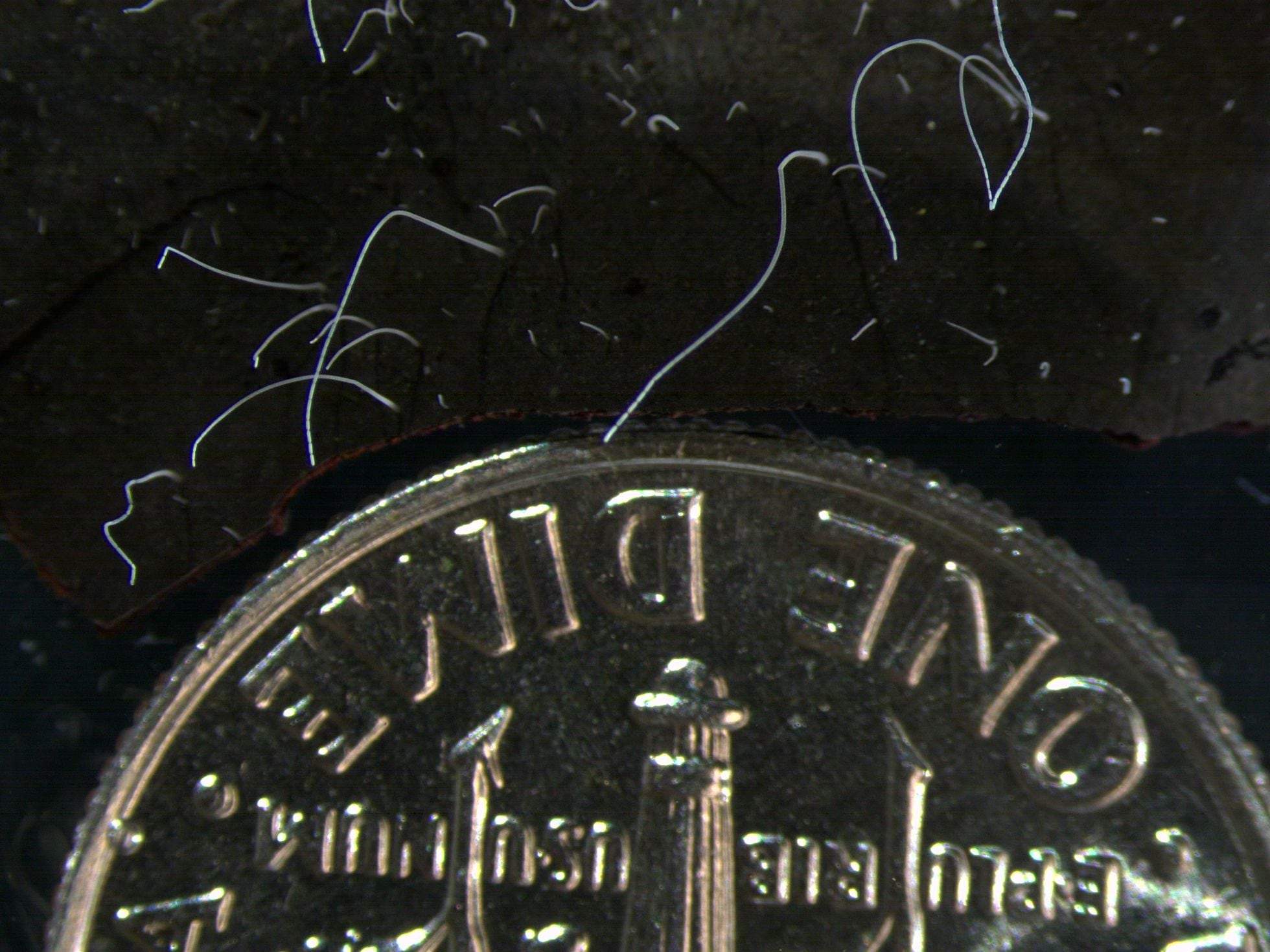An international team of scientists has discovered a bacterium almost a centimeter long in a mangrove swamp on the French island of Guadeloupe, in the Caribbean Sea. The unusual being can be seen with the naked eye, so it contradicts the very definition of a microbe: “Unicellular organism only visible under a microscope.” The bacterium, named Thiomargarita magnifica , has been identified by the Mexican microbiologist Silvina González Rizzo , from the University of the Antilles, in the town of Pointe-à-Pitre.
The usual size of a bacterium is around two thousandths of a millimeter, with exceptions of about 180 thousandths of a millimeter (a little less than the thickness of a folio), such as Thiomargarita namibiensis , found in Namibia in 1999. The newly discovered organism has an average 9,000 thousandths of a millimeter, almost one centimeter. It is about 50 times larger than bacteria hitherto considered giant, according to the researchers, who have so far only published a provisional draft of their analysis. The longest specimen of Thiomargarita magnifica among those found reaches two centimeters.
The microbiologist Silvia G. Acinas considers it to be “an incredible finding”, because “it dislodges various paradigms of biology”. Living things have traditionally been divided into prokaryotic organisms, such as bacteria, and eukaryotes, such as humans. The main difference is that eukaryotes are made up of cells that have their instruction manual, DNA, in a differentiated, membrane-enclosed nucleus. In bacteria, on the other hand, DNA floats free. The great surprise is that Thiomargarita magnifica has structures that are reminiscent of a nuclear membrane, according to Acinas, a researcher at the Institute of Marine Sciences (of the CSIC) in Barcelona who has not participated in the study.
It dislocates several paradigms of biologySilvia G. Acinas, microbiologist
The new bacteria is amazing. Its instruction manual has almost 12,000 genes, triple the usual number, and the organism has half a million copies of this genome, an “unprecedented” amount, according to the authors of the discovery. For Acinas, co-author throughout her life of the discovery of thousands of new species of microbes, Thiomargarita magnifica is “a wonderful example” to investigate the evolutionary mechanisms that have pushed this bacterium to be like this in an ecosystem as unique as the of the mangroves, land populated by tropical bushes that tolerate salt water.
At least 600 million years ago , life on Earth went from simple and solitary cells to multicellular beings, which ended up evolving into organisms as complex as the human being, made up of 30 billion perfectly coordinated cells. Silvina González Rizzo’s team recognizes that “the origin of biological complexity is one of the most important questions, still unanswered, in biology”. The extraordinary characteristics of Thiomargarita magnifica have provoked numerous reactions from the scientific community. Japanese biologist Kazuhiro Takemoto of the Kyushu Institute of Technology has suggested in the journal Sciencethat the new bacterium could even be “a missing link in the evolution of complex cells”.
Biologist Iñaki Ruiz Trillo is much more cautious. “It’s not a missing link,” says this scientist, head of a laboratory at the Barcelona Institute of Evolutionary Biology that investigates the origin of multicellular animals. “It is not an intermediate thing between prokaryotes and eukaryotes. And neither is it an intermediate thing between unicellular and multicellular organisms. It is nothing in between, because it is not in an intermediate zone on the tree of life. It is a lineage that has evolved, they have discovered it now and it is fascinating, but that’s it”, says the Spanish biologist.
Ruiz Trillo believes that the peculiar intracellular membranes of Thiomargarita magnifica may be the result of evolutionary convergence, the phenomenon by which similar structures appear independently, such as the wings of bats and butterflies. “These bacteria have grown larger, because it has worked for them ecologically, and as they have increased in size they have evolved certain characteristics, such as compartmentalization, which, for whatever reason, works better for them,” says Ruiz Trillo. “It is brutal that it is such a large bacterial cell. It breaks your schemes on all sides, ”he adds.
Marine biologist Olivier Gros, from the University of the Antilles, discovered microbial filaments in the sunken leaves of the mangrove swamp on the island of Guadalupe a decade ago, but it was his colleague Silvina González Rizzo who realized five years ago that it was a single bacterium. And it was the Mexican microbiologist herself who chose the scientific name Thiomargarita magnifica , which means “great sulfurous pearl”, alluding to its granular structures with sulfur. Biologist Jean-Marie Volland , from the Complex Systems Research Laboratory (USA), has spearheaded the in-depth analysis of the organism.
The authors believe that more giant bacteria have not been found because of so-called confirmation bias: the tendency to look for results that confirm personal beliefs. No one was looking for a centimeter-sized bacterium. “The discovery of Thiomargarita magnifica suggests that larger and more complex bacteria may be hiding in plain sight,” the scientists conclude.

